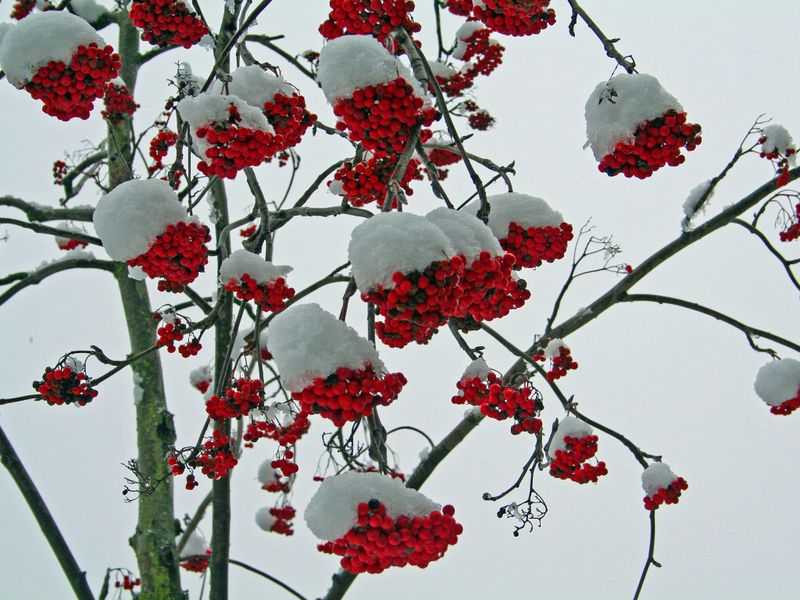Rowberry fruits have a sour-bitter taste, slightly astringent and slightly astringent. The pulp is juicy, contains many small seeds. Rowan fruits are eaten fresh, they are used to make all kinds of jams, jams, lozenges, jams, marmalades and jellies. Also mountain ash – it is an integral ingredient of many cognac, liqueur or alcohol tinctures, it is used to prepare compotes, juices, juices. Ripe berries are often soaked or pickled. Rowan (both fresh and jam) is used as a filling for pies and other baked goods. In addition, the berries are dried and used to make infusions and decoctions, including medicinal ones. Dried berry powder is added to dishes instead of seasoning. Dried red rowan contains a rich vitamin complex. It has hemostatic, capillary-strengthening, anti-inflammatory, astringent, vitamin, diaphoretic, diuretic effects. It is recommended for diseases of the heart and liver, reduced acidity of the stomach, colds, diabetes. A fruit tree, a species of the genus Gorobina, is very common almost throughout Europe, Central Asia and the Caucasus. The range of the species reaches the Far North, and in the mountains, the red rowan already rises to the border of vegetation in the form of a shrub.. Red rowan (Sorbus aucuparia) APPLICATION September-October — the time of harvesting rowan berries. It is necessary to collect berries before the onset of frost, as they lose their medicinal properties under the influence of sub-zero temperatures. However, for use in cooking and preparation of tinctures and infusions, fruits touched by frost are just right — the sugar content of berries increases as a result of the destruction of some organic compounds. When harvesting, fruit bunches are cut with secateurs, and then the fruits are separated, which are sent for drying. Rowan fruits can be dried indoors, or with the use of thermal dryers. In traditional medicine, bark removed from young branches (one-year growth) is also used for medicinal purposes. The bark is harvested at the beginning of the sap flow, that is, in early spring, as soon as young leaves appear. Young branches are cut with secateurs, a longitudinal incision is made in the bark, and then it is easily separated. Bark drying is carried out in attics or in dryers. Bark removed from young branches (one-year growth) is also used for medicinal purposes in folk medicine. The bark is harvested at the beginning of the sap flow, that is, in early spring, as soon as young leaves appear. Young branches are cut with secateurs, a longitudinal incision is made in the bark, and then it is easily separated. Bark drying is carried out in attics or in dryers. Bark removed from young branches (one-year growth) is also used for medicinal purposes in folk medicine. The bark is harvested at the beginning of the sap flow, that is, in early spring, as soon as young leaves appear. Young branches are cut with secateurs, a longitudinal incision is made in the bark, and then it is easily separated. The bark is dried in attics or in dryers. The raw material has a shelf life of two years.




